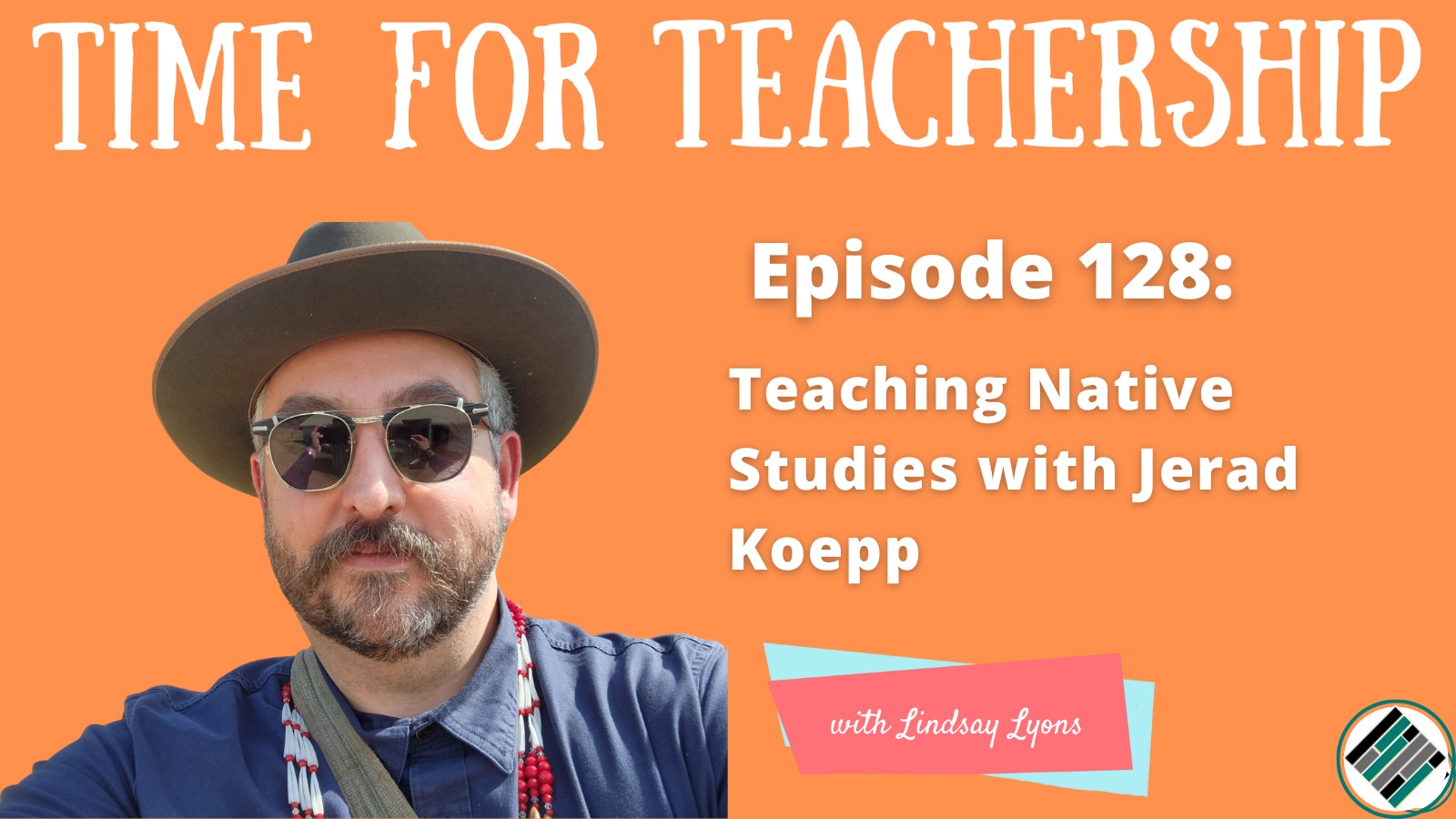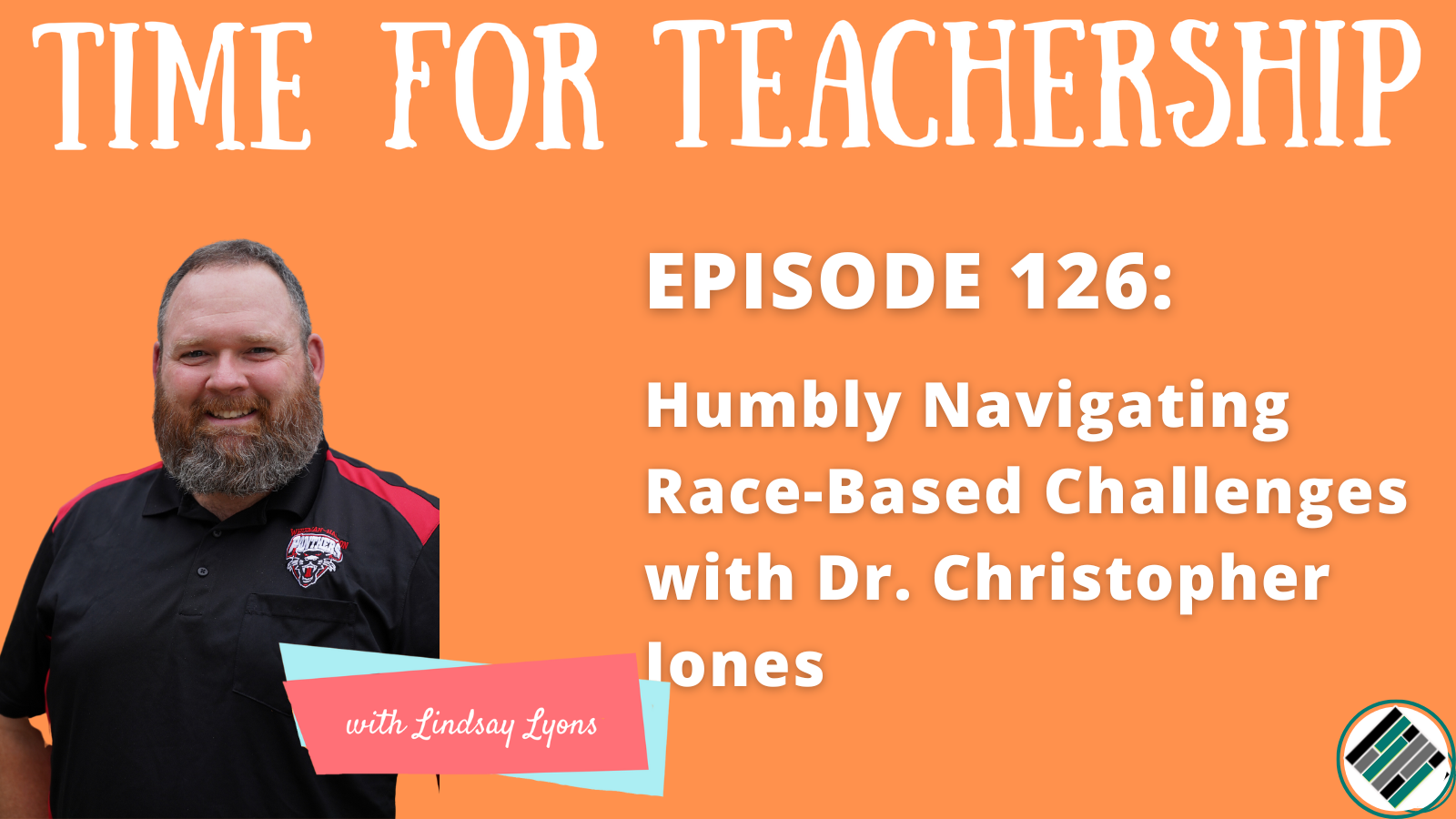
Former social studies teachers, current university professors, and co-authors of the book “Teaching History for Justice: Centering Activism in Students’ Study of the Past,” Dr. Kaylene Stevens and Dr. Christopher Martell talk about how and why we need to teach justice, activism, and movement building in schools. They jump right into the conversation by giving credit to all of the teachers they’ve researched and learned with. I absolutely loved their book, so it’s no surprise I also loved this conversation.
The Big Dream
The values of our country will change if we teach for justice! Survey data shows that the majority of people in power in the United States think everything’s okay (i.e., race, gender, and class-based oppression are not issues.) Most teachers are still white despite most students being students of color, so there’s hope that white teachers can be activists and antiracists.
Alignment to the 4 Stages: Mindset, Pedagogy, Assessment, and Content
Mindset is foundational for all of the other stages. Each of the stages are like buckets. The book is intended to be practical, offering a “how” to teach for justice, which is often overlooked in academia. Kaylene encouraged educators to think deeply about the content addressing justice and joy. Chris pointed out these 4 buckets can be done in an anti-oppressive way or an oppressive way. So, educators can be self-reflective and thoughtful about our positionalities. Their framework also supports a problem-solving pedagogy (Freire).
Given oppressive laws and book-banning, it’s important to know the context in which you work and identify allies to do this work collectively. We can start local! We want to teach our students to be activists, but we don’t necessarily need to tell them what to care about. It’s about teaching students to use the levers of democracy to make changes. Teachers can be renegades (Agarwal-Rangnath) or subversives depending on the context and limitations of your state’s legislation. Teaching is a political act. It doesn’t need to be partisan. We do this for the students!
Action Steps
Step 1: Communicate with families and caretakers. If families are concerned, listen to those individuals. After a conversation, families often realize
Step 2: Create or join a community of educators/learners. Reach out to others who are doing this work. Listen to BIPOC teachers. Pick one text a year on a topic that you don’t know a lot about. Get students out in the community (e.g., field trips, invite community members into class as guests, family/community interviews). Research shows one of the biggest ways to combat “-isms” is exposure.
Step 3: Trust students. Students can use the tools of doing historian work to make the world a better place. We should try to get schools to look more like life than machines. We need to be comfortable with students wanting to change our society’s systems. We can invite debate-oriented pedagogy and give students a chance to bring their own opinions into the class.
One Step (or Two) to Get Started
Figure out where you are and go from there. Read one of the recommended books below!
Think about the complexity of our social identities (and the intersectionality of these identities) as we plan curriculum and do this work.
Stay Connected
You can find this week’s guests on the following platforms:
Dr. Kaylene Stevens:
- Email: [email protected]
- Twitter: @kaylenestevens
Dr. Christopher Martell:
- E-mail [email protected]
- Twitter @chriscmartell
- Mastodon: @[email protected]
Referenced Links and Recommended Readings:
Teaching History for Justice book
Racial Literacies and Social Studies book
Critical Race Theory and Social Studies Futures book
Intersectionality Matters podcast
Visions of Education podcast episode with Dr. Kaylene Stevens
Bettina Love website
To help you implement what we discussed, I’m sharing my Curriculum Boot Camp Planner with you for free. And, if you’re looking for more details on the ideas in this blog post, listen to episode 101 of the Time for Teachership podcast. If you’re unable to listen or you prefer to read the full episode, you can find the transcript here.
Quotes:
- “We want to teach our students to be activists, but we don’t necessarily need to tell them what to care about…It’s about teaching students to use the levers of democracy to make changes.”
- “We trust students. We need to give them more credit…We want them to do history because then they can use that as a tool when they’re making the world a place they want the world to be.”
- “Your classroom should mimic movement building. In movements, there’s not one voice that’s dominant. In movements, you listen to the other people who are forming the movement with you. And that’s what I really hope classrooms are… Share on X


















